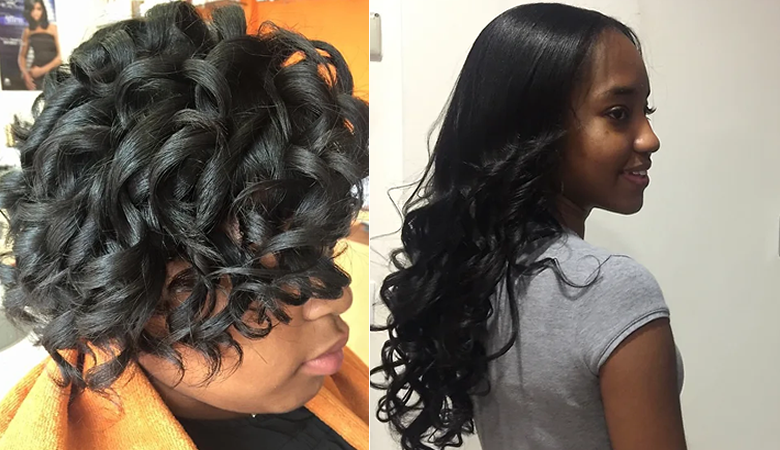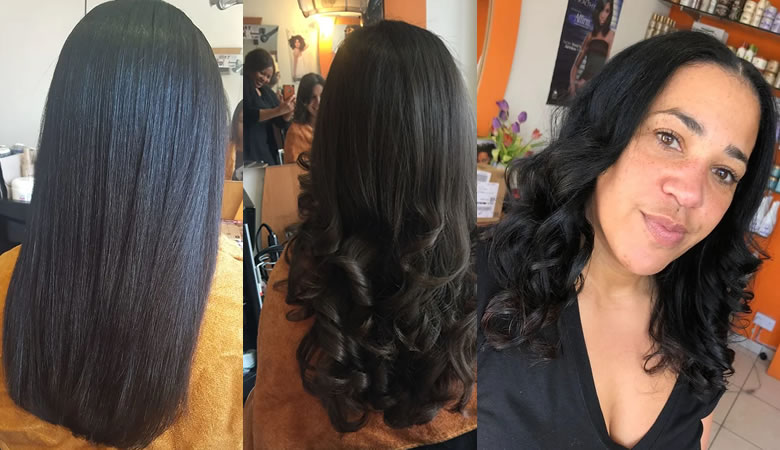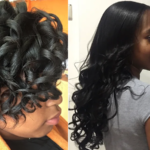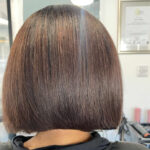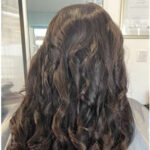Following a recent article I read regarding Hair Relaxers and the damage they have caused, I decided to dig into the archives to present this information so women are informed about what they are using or is being used on them. I’ve posted a few other articles I’ve written on my Facebook page. Like anything in life, if Hair Relaxers are used wrongly they can be dangerous. However, we believe that the manufacturers and scientists who made these products intended for optimal results if used according to the INSTRUCTIONS given. The medicines we take also work in a similar way to help make us better and not to destroy us, but an overdose is an abuse and does cause harm.
So which Relaxer should you use? Really, a non-professional cannot answer this question. So why do some women like to relaxer their hair by themselves or go to non-professionals who only know how to apply the products on their head but do not know what the underlying process is and what the result should be, just because they charge less than the professionals?
Here are the types of Hair Relaxers you will come across:
There are two categories of Relaxers, LYE and NO-LYE, and five different types of elements within the categories. These are:
All Relaxers contain Hydroxide and are strongly alkaline, which mean they have high pH, but some less alkaline than others.
A LYE Relaxer consists of Sodium Hydroxide (this is the type that is usually NOT mixed with a developer). Manufacturers vary the sodium hydroxide content in their solution from 5% to 10% and the pH between 10 and 14. LYE Relaxers are the strongest with the highest alkaline content. These also come in “Base” and “No Base” formulas. A ‘Base’ formula require that you base the scalp to avoid irritation to the client while a ‘No Base’ has lower concentration of Lye and may be applied directly to the root of the hair without requiring a protective base layer.
What is a NO-LYE RELAXER?
No-Lye Relaxers (usually mixed with a developer that comes with it in the box) use a slightly weaker alkaline agent such as Lithium Hydroxide, Calcium Hydroxide, Potassium Hydroxide, and Guanidine Hydroxide. They are less irritating to the scalp which is why people tent to buy them off the shelf. They are usually the ones that come in the boxes.
Another type of No-Lye Relaxer is the one used for Curly Perm which contains Ammonium Thioglycolate.
As one size does not fit all you also need to be aware of the hair types and characteristics to know which Relaxer to use. Within the strengths of Relaxers, there is also Mild, Regular and Super or Resistant strengths for the different types of hair texture.
So which Relaxer should you use? This question can only be answered by a professional who has taken their time to analyse the client’s hair by carrying out various tests including checking the hair texture, examining the scalp condition to understand if the client has a sensitive scalp. If these tests are not carried out the result will be substandard and may also cause damage.
This is similar to applying colour. I am a natural African Blonde, but my hair changes colour by the sun (why I don’t know) so if the hair technician does not take time to find out what my Base colour is before applying certain colours on my hair she will be surprised that my hair will turn Green. Now is this the manufacturers fault? No! Rather it is due to lack of understanding of the basic process.
What I have seen in a lot of non-professional salons is this, a client goes to the salon and prescribes for herself what Relaxer or Colour she wants to use on her hair because her friend uses the same or because it is the latest in the market, owned by some well-known company. The other scenario is when the stylist also does not know what to use because they do not have the knowledge to carry out consultation with their clients or understand what that means, so they asked the client ‘which Relaxer do you want?’ This is like a doctor asking a patient what medicine I should give you. This is scary, if the doctor does not know then why is he a doctor or called a doctor?
Now based on the information above how can any layperson know what she wants if the ‘professional’ herself do not know what to offer? This is where the main issue is, lack of knowledge and understanding. Relaxers are easy to apply and can be done by anyone if they stand over you, but because it is a CHEMICAL it should ONLY be done by people who understand the chemicals and how they interact with each other.
Over processing the hair can significantly weakened it, even by the physical overlap of excessive applications or by a single excessive one, it can cause brittleness, breakage, or even widespread alopecia (which is loss of hair).
With our naturally curly hair, we basically have two options. We can accept it as it is by going natural or straighten it with a few different options. If you decide to straighten it you can either soften it of go dead straight but seek professional advice before deciding which way to go, this could be based on manageability or lifestyle.
The most common reason people decide to have their hair straightened is definitely not to destroy the hair and scalp but to eliminate curls that may sometimes be difficult to manage. Sometimes this process is used also to soften or eliminate wavy hair so that it is easy to wear.
My goal in presenting this information is not to say chemical straightening for maintaining our hair is best. I am only presenting the facts, so women are well informed to seek professional advice and service. Relaxers should not be a DIY or cut cost services since they are chemicals, because your hair is your crown of glory. Really you get what you pay for and that is the truth. BEWARE!
You want a professional service, then give us a call!


